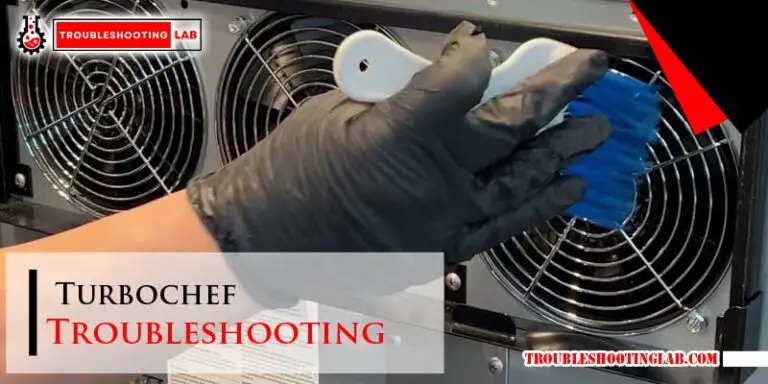Dometic Refrigerator Circuit Board Troubleshooting: Easy Fixes
Is your Dometic refrigerator acting up and leaving you frustrated? Don’t worry—you’re not alone.
The circuit board is often the brain behind your refrigerator’s smooth operation, but when something goes wrong, it can feel like a puzzle you just can’t solve. The good news? You don’t have to be a tech expert to figure it out.
With the right guidance, you can troubleshoot common circuit board issues and potentially save yourself time, money, and stress. In this guide, we’ll walk you through simple, actionable steps to get your Dometic refrigerator back on track. Ready to take the guesswork out of your repair? Let’s dive in.
Common Signs Of Circuit Board Issues
Dealing with a Dometic refrigerator that’s acting up? The problem might lie in the circuit board. This small but essential component acts as the brain of your fridge, and when it falters, your refrigerator’s performance takes a hit. Spotting the signs early can save you from costly repairs and spoiled food.
1. The Refrigerator Fails To Turn On
One of the clearest signs of a circuit board issue is when your refrigerator doesn’t power on. You press the button, but nothing happens—no lights, no hum, just silence. This could mean the circuit board isn’t sending the necessary signals to power the unit.
Before you assume the worst, check the power source. Ensure the fridge is plugged in and there’s no tripped breaker. If everything checks out, the circuit board might be the culprit.
2. Cooling Problems
Is your fridge not keeping things cold? Or perhaps the freezer isn’t freezing? Faulty circuit boards often mess with temperature regulation, causing your unit to run too warm or too cold.
You might notice melted ice cream or soft butter, even when the settings seem correct. If you’ve already cleaned the vents and checked the thermostat, the circuit board could be at fault.
3. Erratic Or Flashing Display
Modern Dometic refrigerators often come with digital displays. If the display flickers, shows error codes, or doesn’t respond to inputs, this could point to a circuit board malfunction.
A friend once complained about their fridge flashing “E1” repeatedly. It turned out to be a circuit board issue, which was resolved by replacing a damaged component. Keep an eye out for unusual display behavior.
4. Intermittent Operation
Does your refrigerator seem to work perfectly one day and stop the next? This on-again, off-again behavior is another red flag for circuit board trouble.
Unstable connections or damaged components within the board can cause inconsistent performance. You might notice food spoiling faster or the fridge making odd noises during operation.
5. Strange Noises
Clicking, buzzing, or humming sounds could indicate a problem with the circuit board. These noises often occur when the board struggles to communicate with the compressor or cooling fans.
Don’t ignore these sounds. They might seem minor at first, but they usually signal a deeper issue that could worsen over time.
6. Overheating Components
If the back of your fridge feels unusually hot, the circuit board might be overloading or malfunctioning. Overheating can damage other components and shorten your refrigerator’s lifespan.
Turn off the fridge and inspect the circuit board for signs of burning, melted wires, or scorch marks. Addressing this early can prevent further damage.
Have you noticed any of these signs in your Dometic refrigerator? Don’t wait for the problem to escalate. Identifying a faulty circuit board early can save you time, money, and a lot of frustration. What’s your next step if you spot these issues? Let us know in the comments below!
Tools Needed For Troubleshooting
Having the right tools makes troubleshooting your Dometic refrigerator circuit board easier. Using the correct equipment helps pinpoint issues quickly. It also reduces the risk of further damage. This section explains the tools you need to get started.
Multimeter
A multimeter is essential for testing electrical components. It measures voltage, resistance, and continuity. Use it to check if power is reaching the circuit board. This helps identify broken wires or faulty connections.
Screwdrivers
Screwdrivers are needed to access the circuit board. Choose a set with different sizes and types. Phillips and flat-head screwdrivers are commonly required. They help you remove covers and panels without damaging screws.
Needle-nose Pliers
Needle-nose pliers are useful for handling small wires and connectors. They let you grip items tightly in tight spaces. Use them to safely disconnect or reconnect wires on the board.
Wire Stripper
A wire stripper is handy for repairing damaged wires. It removes insulation without cutting the wire itself. This tool ensures clean connections when replacing or fixing wires.
Flashlight
A flashlight helps illuminate hard-to-see areas inside the refrigerator. It is especially helpful in dimly lit spaces. Use it to inspect wires, connectors, and the circuit board.
Electrical Tape
Electrical tape is important for insulating exposed wires. It prevents short circuits and protects connections. Use it to secure repaired wires or insulate areas you’re working on.
User Manual
The user manual provides valuable information about your refrigerator. It includes diagrams and instructions for the circuit board. Refer to it for proper wire placements and component identification.
Safety Gloves
Safety gloves protect your hands while working with electrical components. They reduce the risk of shocks or injuries. Always wear gloves when handling wires or circuit boards.
Voltage Tester
A voltage tester checks if electrical power is present. Use it to confirm the circuit board is receiving power. This tool helps identify power-related issues quickly.
Locating The Circuit Board
Locating the circuit board in your Dometic refrigerator is an essential step during troubleshooting. The circuit board controls key functions, so accessing it correctly is important. Before starting, ensure you are familiar with the basic layout of your refrigerator. This will save time and help you work efficiently.
Safety Precautions To Take
Safety is the first priority when working with electrical components. Disconnect the refrigerator from its power source before starting. This reduces the risk of shocks or accidental damage. Use insulated tools to handle any components. Ensure the area is well-lit and free of clutter. Wear gloves to protect your hands from sharp edges or debris. Double-check the power is off before touching any internal parts.
Step-by-step Access Guide
Start by locating the access panel on your refrigerator. This is usually found on the back or underside of the unit. Use a screwdriver to remove any screws securing the panel. Keep the screws in a safe place to avoid losing them. Once the panel is off, identify the circuit board. It is typically a green or black board with wires and connectors attached. Refer to your refrigerator’s manual for exact placement if needed.
Inspect the surrounding area for any obstructions. Carefully disconnect wires connected to the board, noting their positions. Take a photo or label the wires if needed for reassembly. Once the wires are disconnected, the circuit board can be gently removed for further inspection or replacement.

Credit: www.youtube.com
Testing The Power Supply
Testing the power supply is a critical step in troubleshooting your Dometic refrigerator’s circuit board. A steady power supply ensures the refrigerator runs smoothly without interruptions. Faulty power can lead to performance issues or even damage the circuit board. Below are two essential steps to test the power supply effectively.
Checking Voltage Levels
Start by measuring the voltage supplied to the circuit board. Use a multimeter to check for the correct voltage output. Refer to your refrigerator’s manual for the recommended voltage range. Ensure the reading is stable and within the specified range. Fluctuations or low voltage may indicate an issue with the power source. If the voltage is too low, the refrigerator may not function properly.
Inspecting Power Connections
Inspect all power connections leading to the circuit board. Look for loose or corroded wires. Ensure all connectors are firmly attached and free from damage. Damaged wires can disrupt power flow and impact the board’s performance. Replace any worn or frayed wires immediately to prevent further issues. Properly secured connections are vital for consistent power delivery.
Inspecting For Physical Damage
Physical damage to a Dometic refrigerator circuit board can disrupt its function. Regular inspection helps identify visible issues that may need attention. By checking for signs of wear or damage, you can pinpoint potential problems early.
Burn Marks And Corrosion
Burn marks on the circuit board indicate overheating or electrical short circuits. These marks can often be found near connectors or solder points. Corrosion appears as discoloration or buildup on the metal parts of the board. Moisture exposure is a common cause of corrosion, which weakens connections and affects performance.
Inspect the board under good lighting to spot burn marks or corrosion. Use a magnifying glass for detailed examination. If signs of damage are present, the board may need cleaning or replacement to restore functionality.
Loose Or Damaged Components
Loose components can interrupt the electrical flow and cause malfunctions. Check for detached wires, loose screws, or broken solder joints. Damaged components like cracked capacitors or resistors may prevent the board from functioning properly.
Gently touch components to ensure they are securely attached. If you find any loose or damaged parts, repair or replace them to avoid further issues. Keeping components intact ensures the circuit board operates effectively.

Credit: www.reddit.com
Resetting The Circuit Board
A Dometic refrigerator is a reliable appliance, but like any electronic device, its circuit board may occasionally act up. Resetting the circuit board can often fix minor glitches and restore functionality. Before you dive into costly repairs, this straightforward process might save you both time and money.
Steps To Perform A Reset
Resetting the circuit board on your Dometic refrigerator isn’t complicated. Here’s how you can do it:
- Turn off the refrigerator and unplug it from the power source. This ensures your safety and prevents electrical damage.
- Wait for about 5 to 10 minutes. This allows the circuit board to fully discharge and reset.
- Reconnect the power and turn the refrigerator back on. Pay attention to any error codes or unusual behavior.
If your fridge has a reset button, press and hold it for a few seconds during the process. Refer to your user manual for the exact location of the button. Not all models have one, but if yours does, it simplifies the reset.
When To Consider A Reset
A reset isn’t always the solution, but it’s a good first step for common issues. If your refrigerator isn’t cooling properly or is displaying error codes, resetting the board may clear the problem.
Unusual beeping or unresponsive controls can also indicate the need for a reset. Think of it as giving your fridge a fresh start without diving into complex troubleshooting.
However, if the issue persists after a reset, the problem could be more serious. In that case, contacting a professional or replacing the circuit board might be necessary.
Have you tried resetting a circuit board before? If not, this simple process might just save your fridge from unnecessary downtime. Give it a try and see if it resolves your issue.
Replacing Faulty Components
When your Dometic refrigerator stops working properly, it’s often due to issues with the circuit board. Replacing faulty components can breathe new life into your appliance. Whether you’re a seasoned DIYer or trying this for the first time, tackling this problem step-by-step can save you money and help you feel accomplished.
Identifying Replaceable Parts
The first step is knowing which parts can be replaced. Start by visually inspecting the circuit board for signs of damage. Burn marks, swollen capacitors, or loose connections often indicate a problem.
Refer to your refrigerator’s user manual to understand the parts and their functions. Common replaceable components include resistors, capacitors, and relays. If you spot corrosion on connectors, it’s likely time for a replacement.
Ask yourself: Do you have the tools to test electrical parts? A multimeter can help you check continuity and voltage. Without it, you might end up replacing unnecessary parts.
Installing New Components
Once you’ve identified the faulty part, make sure you buy the correct replacement. Match the specifications exactly to ensure compatibility. Websites like Amazon or specialty appliance stores often list parts by refrigerator model.
Before installation, disconnect the refrigerator from power to avoid electric shocks. Safety first! Use a screwdriver to remove the circuit board and carefully detach the damaged component.
Place the new part in the same position as the old one and solder it securely. Double-check your work to ensure connections are tight. A shaky solder job can lead to more problems down the line.
If you’re feeling unsure, watch a quick tutorial on YouTube. It’s amazing how much confidence you can gain from seeing someone else do it first.
Replacing faulty components isn’t just about fixing your fridge; it’s about taking control of the repair process. What part of the troubleshooting process do you find most intimidating? Let us know in the comments!

Credit: www.youtube.com
When To Seek Professional Help
Sometimes, troubleshooting your Dometic refrigerator circuit board can feel like solving a puzzle with missing pieces. While basic fixes like checking connections or replacing a fuse are manageable, certain issues demand expert intervention. Knowing when to call a professional can save you time, frustration, and prevent further damage to your appliance.
Complex Circuit Issues
Not all circuit problems are straightforward. If you notice burnt components, melted wires, or a persistent error code that doesn’t reset after basic troubleshooting, it’s time to seek professional help.
Attempting to fix intricate electrical issues without proper tools or expertise can worsen the problem. You might accidentally damage the board or cause the refrigerator to stop working entirely.
Professionals have specialized equipment to pinpoint faults and repair them safely. Their experience ensures that your appliance gets back to optimal performance without unnecessary risks.
Avoiding Further Damage
Have you ever tried fixing something, only to make it worse? This is a common risk when dealing with circuit boards. They are delicate, and one wrong move could lead to irreparable damage.
If your refrigerator suddenly shuts off or makes unusual noises after DIY attempts, stop immediately. Continuing without understanding the root problem could lead to costly repairs or even require a full replacement.
Professional technicians not only fix the issue but also inspect the board for hidden damage. This ensures your refrigerator stays functional for years to come.
So, ask yourself: Is the risk of further damage worth it? If you’re unsure, it’s probably best to let an expert handle the complexities. Your refrigerator is an investment—protect it wisely!
Preventing Future Circuit Problems
Dealing with circuit board issues in your Dometic refrigerator can be frustrating. But here’s the good news—you can take steps to prevent these problems from happening again. A little effort now can save you a lot of time, money, and headaches down the road.
Regular Maintenance Tips
Regular maintenance is your first line of defense. Start by cleaning the vents and coils at least twice a year. Dust and debris can cause overheating, which puts unnecessary strain on the circuit board.
Check the connections and wires for any signs of wear or corrosion. Even a loose wire can create bigger issues over time. If you notice anything off, tighten or replace the connections right away.
Don’t forget to inspect the fridge’s performance. If it’s not cooling properly or making unusual noises, it may signal an underlying electrical issue. Catching these signs early can prevent circuit board damage.
Protecting Against Power Surges
Power surges are silent killers for circuit boards. Installing a surge protector can be a lifesaver. It’s a small investment that shields your refrigerator from voltage spikes.
If you travel with your RV, consider using a portable surge protector. It can protect your fridge when you plug it into unfamiliar power sources, like at campgrounds.
Unplug your refrigerator during thunderstorms or when you’re not using it for long periods. This simple habit can protect the circuit board from sudden electrical surges.
Have you thought about how these small steps could extend your fridge’s lifespan? Implementing these tips not only reduces repair costs but also keeps your appliance running efficiently. What’s stopping you from giving your Dometic refrigerator the care it deserves?
Conclusion
Troubleshooting a Dometic refrigerator circuit board can feel overwhelming but manageable. Start by checking connections and inspecting for visible damage. Use a multimeter to test components carefully. Replace any faulty parts to restore proper function. Always prioritize safety while working with electrical systems.
If issues persist, consulting a professional is a wise step. Regular maintenance can help prevent future problems and extend your fridge’s lifespan. By understanding basic troubleshooting steps, you can save time and avoid unnecessary expenses. Keep your refrigerator running smoothly for reliable performance every day.






